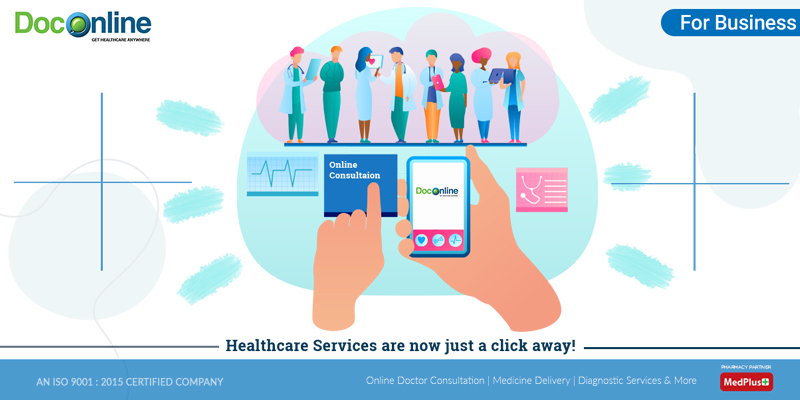Comprehending the Cost-Effectiveness of Subscription-Based Medical Care Models
As the healthcare landscape evolves, subscription-based models emerge as an engaging choice, assuring to redefine just how people handle medical expenses. Reviewing these designs' cost-effectiveness requires a nuanced comparison with conventional insurance coverage, considering both financial implications and person contentment.
Review of Subscription-Based Designs
Subscription-based health care models, sometimes described as straight health care or attendant medication, are increasingly gaining focus as a prospective service to inefficiencies within typical health care systems. These models operate the concept of offering clients straight accessibility to doctor via a yearly or monthly cost, bypassing the requirement for traditional insurance policy systems. This setup aims to streamline patient-provider communications by reducing management concerns, which usually impede prompt and individualized treatment.
At the core of subscription-based designs is the focus on a much more tailored client experience. People benefit from boosted access to their doctors, frequently consisting of next-day or same-day visits, expanded consultation times, and straight interaction channels such as phone or video clip telephone calls. This model promotes a proactive method to medical care, where patients and suppliers can collaboratively concentrate on preventative treatment and persistent disease administration.

Cost Comparison With Conventional Insurance Coverage

Among the key economic benefits of registration versions is openness in prices. People pay a foreseeable cost, which can streamline budgeting and monetary preparation. Furthermore, these designs usually get rid of co-pays and deductibles for covered services, reducing out-of-pocket spending. Alternatively, typical insurance policy might be a lot more beneficial for individuals requiring specialized treatment or pricey treatments not covered under a membership model, as they gain from the more comprehensive protection network and cost-sharing systems.
Nevertheless, cost-effectiveness is context-dependent. While registration designs could provide financial savings for those mainly requiring medical care, people with chronic problems or specialized healthcare requirements could find typical insurance a lot more comprehensive. Examining details health care requirements and potential use is essential in determining the most affordable choice for people.
Effect on Client Complete Satisfaction
Client satisfaction within subscription-based health care models frequently reflects a significant enhancement over standard insurance policy systems. This improvement is largely connected to the customized treatment and access these versions provide. Patients regularly report greater contentment due to decreased delay times and the simplicity of scheduling consultations. Unlike conventional systems, where patients could experience delays in receiving treatment, subscription-based designs make sure even more direct and timely communications with doctor.
Furthermore, the openness in costs related to subscription-based medical care relieves the typical frustrations connected to unforeseen charges and complicated invoicing processes seen in typical insurance (subscription based healthcare). Individuals value knowing the precise economic dedication upfront, leading to enhanced depend on and confidence in their healthcare administration
In addition, the emphasis on preventive treatment and health in registration designs adds to boosted health and wellness results, even more improving client satisfaction. By concentrating on recurring health care instead of episodic care, clients experience an even more alternative and continuous medical care journey.
In addition, the improved provider-patient relationship promoted in these versions, characterized by more time invested per person and customized interest, plays a critical role in raising person fulfillment degrees, as people feel truly taken care of and recognized.
Supplier Experiences and perspectives
From the carrier's perspective, subscription-based health care models use a transformative approach to supplying clinical solutions. These models highlight a preventative and hop over to these guys aggressive health care strategy, allowing suppliers to concentrate on detailed client treatment without the restraints of standard fee-for-service plans (subscription based healthcare). This shift in focus frequently results in boosted individual results and increased company fulfillment, as health next page care experts can allot even more time and resources to patient involvement and individualized care strategies
In addition, subscription versions facilitate foreseeable revenue streams, which boost economic stability for doctor. This predictability permits improved resource preparation and allocation, adding to a more effective health care delivery system. Providers can purchase staff infrastructure, modern technology, and training renovations, thus improving the quality of treatment used.
Nonetheless, the shift to subscription-based versions is not without obstacles. Providers have to adjust to new operational frameworks, which can involve significant modifications in invoicing practices and person administration systems. Additionally, there is a fundamental demand for durable data monitoring to track client end results and guarantee quality treatment. Regardless of these obstacles, lots of companies discover that the advantages of increased patient interaction and structured procedures surpass the first challenges, making subscription-based designs an eye-catching alternative.
Future Leads and Difficulties

A main challenge is regulatory conformity, as registration models should follow progressing health care policies and insurance needs. This demands continuous adaptation and advancement to make certain placement with legal criteria. Furthermore, incorporating these designs into existing healthcare infrastructures can be intricate, calling for substantial financial investments in innovation and training.
There is likewise the potential risk of developing inequities in healthcare accessibility, as membership models may next prefer those who can manage them, leaving vulnerable populaces underserved. Addressing this calls for thoughtful consideration of prices approaches and subsidy devices to make sure inclusivity.
Conclusion
Subscription-based healthcare designs present a feasible choice to traditional insurance coverage by using economic predictability and transparency, particularly benefiting individuals with chronic problems or frequent health care needs. The cost-effectiveness of these versions is contingent upon specific healthcare usage patterns and conditions. While they may boost client contentment and streamline budgeting, obstacles remain in attending to specialized treatment demands. Future factors to consider consist of balancing extensive coverage with cost and integrating these versions within the more comprehensive healthcare system for optimum outcomes.
Subscription-based medical care designs, in some cases referred to as straight primary treatment or concierge medication, are increasingly getting focus as a prospective option to inadequacies within conventional health care systems. Unlike typical systems, where people could experience hold-ups in getting care, subscription-based versions make sure even more prompt and direct interactions with medical care companies.
These versions stress a proactive and preventative health care method, enabling service providers to focus on comprehensive person treatment without the constraints of standard fee-for-service plans. As these models continue to get grip, they use the possible to change person access to care, simplify solution distribution, and optimize medical care investing.Subscription-based health care models provide a viable choice to conventional insurance coverage by supplying financial predictability and transparency, particularly benefiting people with chronic problems or regular health care needs.